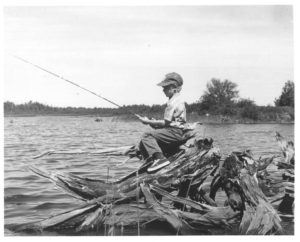Have you ever looked at a stock and thought, “I wish I could have bought it at (say 5%) lower than it is now!”? Or, “I missed that breakout to the upside – let’s see if it gives back some of those gains and I can snatch it up then!”? Or, have you ever thought that you could get paid for thinking this way? There is – it is called Put Writing. I do a lot of put writing. Although I wouldn’t mind owning the underlying stock at the put strike price, my main objective is to generate income by collecting the put premiums that I sell.
Limit Orders
The traditional way of “fishing” to see if you can buy a stock at a cheaper price is through a limit order. A limit order means that you will buy the stock at a certain price, but no higher. The limit price is usually lower than the current price. Limit orders are different than market orders, which mean that you will buy the stock right now at its market price, whatever that is. Many traders use limit orders because they don’t want to get screwed in their trade executions. Often, their limit price is at the market or maybe a few pennies below market – they don’t want to pay more than the current market for the stock. The downside of limit orders is that the trade might not be executed – even if the limit order is a penny lower than the current price. With a limit order, no money is changed hands until the stock is bought – there is no “down payment” necessary.

Get Paid to Fish
What if you went fishing and someone was there who paid you to put your hook and line in the water? What if they said that, if you don’t catch anything, you can keep the money? Sounds like a pretty good deal, right? That’s what put writing is. They pay you (in the form of put option premiums) to fish, and you keep the money if you don’t catch anything. If you do catch a fish, you can keep it. Cook it up, and have it for dinner. Or, take it to the fish market and sell it, and maybe make some money there. If you can keep it fresh!
My Strategy
I want to be the fisherman who doesn’t catch the fish but gets paid anyway. I typically look at short-term time horizons – 1 week or so. Identify a market that you think probably won’t go down for that period, and write a put at some strike price below the current market price. Depending on the market’s or that stock’s volatility, the strike price could be near the current market price, or, if things are more volatile, the strike price could be farther away from the market price. Find something that you think probably won’t go down: That is a different mindset than Find something that you think probably will go up. A more defensive mindset. Collect your premium, and reassess a week from now. I have a target in mind for my put writing: I am targeting a 10% return. That is, take however much capital you want to devote to this strategy, then multiply by 0.1, then divide that number by 52, and that’s how much option premium I like to target to collect on average each week. Adjust week-to-week based on the level of volatility as well as your own personal comfort.
IMO
I just read an article that stated that a problem with writers is that the writers think that their readers know as much about a subject as the writer does. My objective with this blog is to educate all readers about certain topics in ways that everyone can understand and that are fun to read. Please contact me if you have questions about this or any of my blog posts. For this post, I use my fishing analogy so that hopefully readers can relate to the concept of put writing. If you don’t get it, please contact me, and I will try again. If you do get it, and hopefully it is something you might want to try yourself, please contact me, and I can help!
